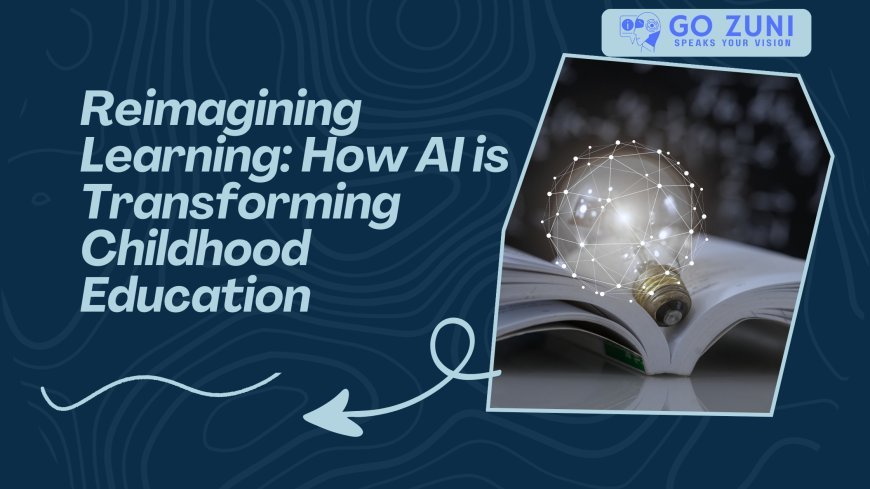How Educational Institutions Can Prepare for an AI-Driven Future
Discover how schools and universities can prepare for the future of AI in education with practical strategies, tools, and an eye toward innovation and equity.

The AI Buzz Is RealBut Are Schools Ready?
Picture this: a student struggling with math late at night gets instant, personalized guidance from an AI-powered tutor. A teacher, overwhelmed by grading, gets real-time feedback analytics on student performance. Sound futuristic? It's already happening.
AI in education isn't some far-off concept anymoreit's showing up in classrooms around the globe. From automated essay scoring to intelligent lesson planning and even AI homework help, artificial intelligence in education is here, and its evolving fast.
As someone who's spent years in the IT and EdTech space, I can tell you this: institutions that resist this wave risk falling behind, while those that prepare now are setting themselves up for a smarter, more inclusive, and efficient learning environment.
So, what can educational institutions do today to thrive in an AI-driven tomorrow?
Lets dive in.
1. Start with Educator Empowerment, Not Just Tech Adoption
Before you even think about buying that fancy new AI platform, take a step back.
AI doesnt replace teachersit empowers them.
For instance, classroom AI tools can help educators track real-time learning gaps and offer targeted content. But if teachers arent trained or confident in using these tools, theyll either misuse them or avoid them altogether.
Actionable Tip:
Invest in professional development programs that help educators understand the why and how behind AI and education. Give them space to experiment and learnmaybe even start with pilot classrooms where early adopters can mentor others.
2. Build a Smart (But Flexible) Infrastructure
To integrate artificial intelligence in education effectively, institutions need digital ecosystems that are adaptablenot locked into rigid legacy systems.
Cloud-based learning management systems (LMS), scalable data analytics tools, and API-friendly EdTech platforms make it easier to incorporate classroom AI tools without a complete tech overhaul.
Real-Life Insight:
One school I consulted for added an AI-powered platform to their existing LMS. Within weeks, they were tracking student comprehension in real time and offering personalized content pathswithout hiring new staff or overloading teachers.
3. Prioritize Ethical and Inclusive AI Use
AI isnt immune to bias. And when we talk about AI schools, its not just about hardware and softwareits about values.
How will AI systems handle data privacy? Will the technology adapt to diverse learning needs, or will it reinforce inequities? These are real concerns, especially in underserved communities.
Actionable Tip:
Create an ethics board that includes educators, IT professionals, parents, and even students. Let them evaluate AI tools through the lens of equity, privacy, and cultural sensitivity.
4. Experiment with AI Homework Help Tools
Heres something practical you can implement right now: AI homework help platforms.
These tools dont just spit out answersthey explain why something is correct, provide step-by-step guidance, and often tailor responses based on a students learning style.
Relatable Example:
Think of a high schooler prepping for finals at 2 AM. Instead of struggling alone, they can get AI-guided assistance that breaks problems down just like a personal tutor would. Its not just smartits humane.
5. Redesign the Curriculum for the AI Age
Its not enough to use AI in classrooms; we also need to teach students about AI.
Courses on data literacy, ethical tech, and even beginner AI programming should become staples. After all, todays learners are tomorrows AI developers, analysts, and policymakers.
Bonus Tip for IT Pros:
If you're looking to break into EdTech, helping schools design curriculum around AI fundamentals is a huge and growing opportunity.
Final Thoughts: Start Small, Think Big
The idea of preparing for an AI-driven educational future can feel overwhelming. But it doesnt have to be. You dont need to be a Silicon Valley-funded school to get started. Begin with one AI tool, one pilot program, one teacher championing the cause.
AI and education are on a collision coursein the best possible way. Whether youre a school administrator, a tech lead, or someone dreaming of a future in educational IT, now is the time to lean in, learn, and lead.
Lets build classrooms that dont just keep up with the futurethey help create it.








































